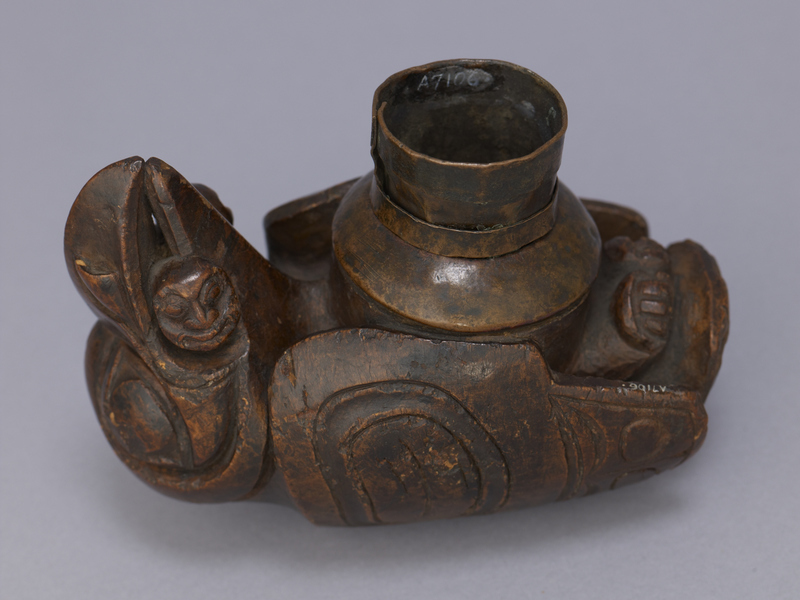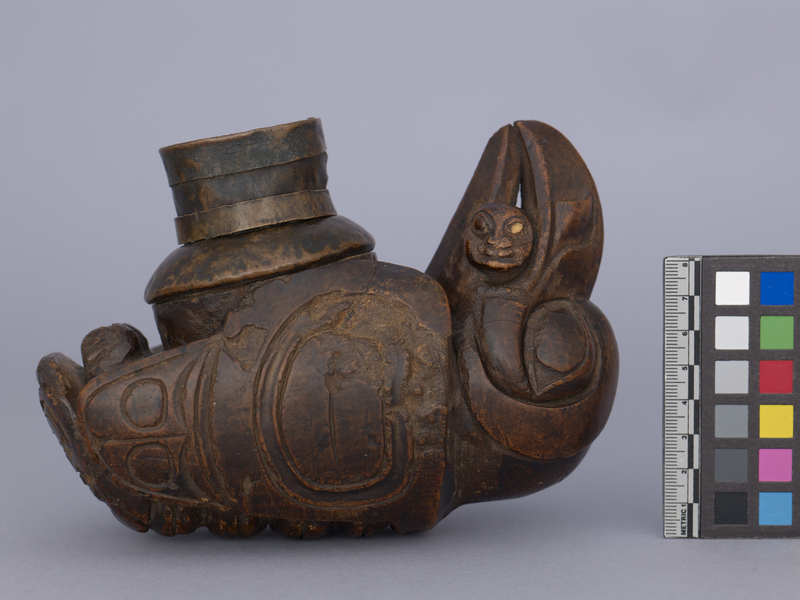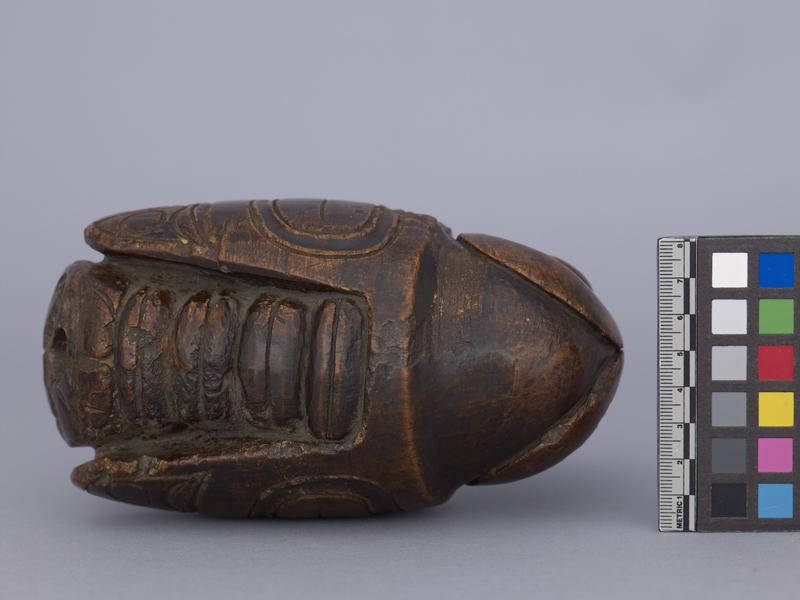Pipe Item Number: 3260/35 from the MOA: University of British Columbia



Description
Pipe bowl in the shape of a raven lying on its back. Small three-dimensionally carved faces are at both sides of the beak. The pipe bowl, in the bird's stomach, has a copper insert. The stem hole is at the feet.
History Of Use
With the introduction of commercial tobacco by Europeans in the late 18th century, Tlingit and Haida carvers began to create an imaginative range of wooden pipes. These usually represented clan crests, and were meant for honoured guests to use at ceremonial occasions, including feasts and potlatches that honoured the deceased. The pipes were often made of walnut and other non-native woods which, along with their metal components, were recycled from trade rifles that were beyond repair. During smoking, this large, heavy pipe would have been held as though the raven is lying on its back; the pipe bowl with copper insert rises from the bird’s belly, and the stem hole doubles as a small human’s open mouth at the raven’s feet.
Specific Techniques
Hardwoods were used on the pipes because they were stronger and did not burn. The density of the wood gives better detail, allowing for really deep and crisp lines [Dempsey Bob – Tahltan/Tlingit, 2019].
Narrative
Lt. George T. Emmons collected this pipe, presumably in Alaska, and in 1910 sold it to George Gustav Heye, who founded the Museum of the American Indian, New York. In 1972 that museum exchanged the pipe to art dealer James Economos, and it was acquired by the Dominique and John de Menil Collection. Eventually resold again, it was purchased by MOA donor Elspeth McConnell.
Item History
- Made in Alaska, USA between 1840 and 1860
- Owned by Elspeth McConnell before August 12, 2017
- Received from Elspeth McConnell (Donor) on August 12, 2017
What
- Name
- Pipe
- Identification Number
- 3260/35
- Type of Item
- pipe
- Material
- walnut wood and copper metal
- Overall
- height 12.5 cm, width 9.0 cm, depth 17.0 cm
Who
- Culture
- Tlingit
- Previous Owner
- Elspeth McConnell
- Received from
- Elspeth McConnell (Donor)
Where
- Holding Institution
- MOA: University of British Columbia
- Made in
- Alaska, USA
When
- Creation Date
- between 1840 and 1860
- Ownership Date
- before August 12, 2017
- Acquisition Date
- on August 12, 2017
Other
- Condition
- fair
- Accession Number
- 3260/0035